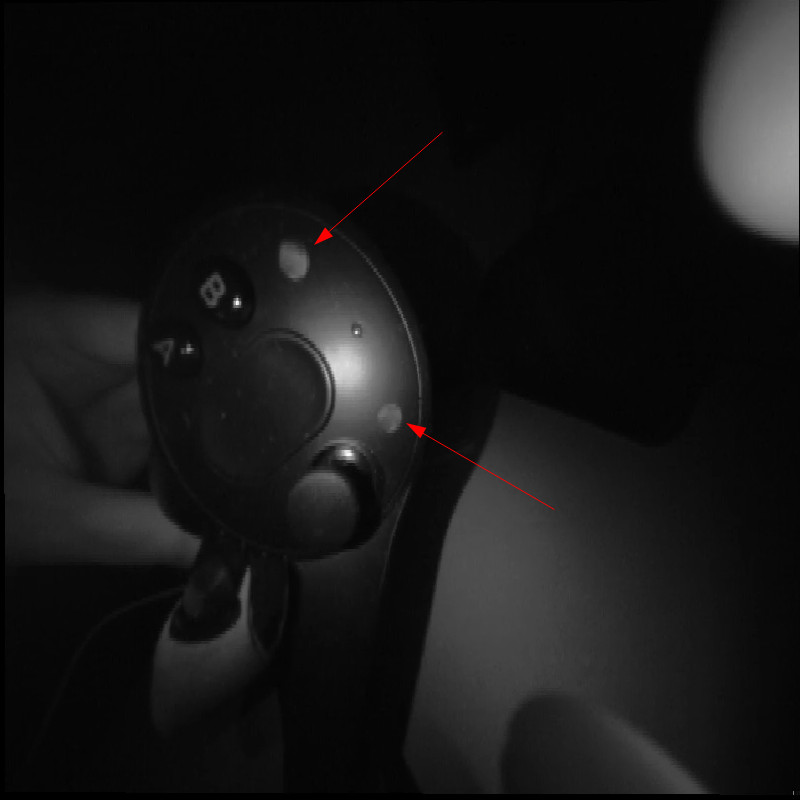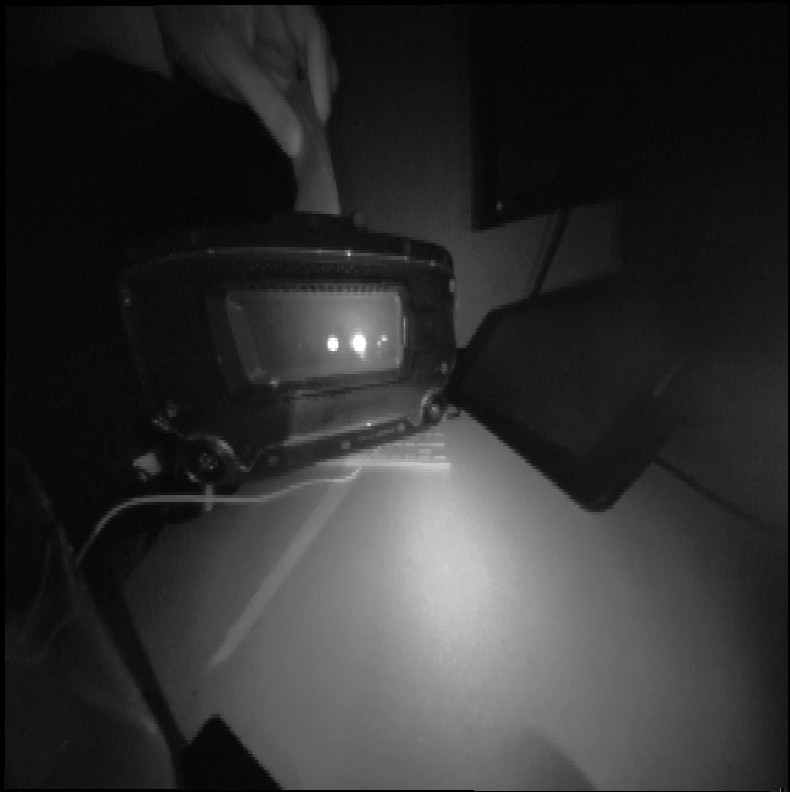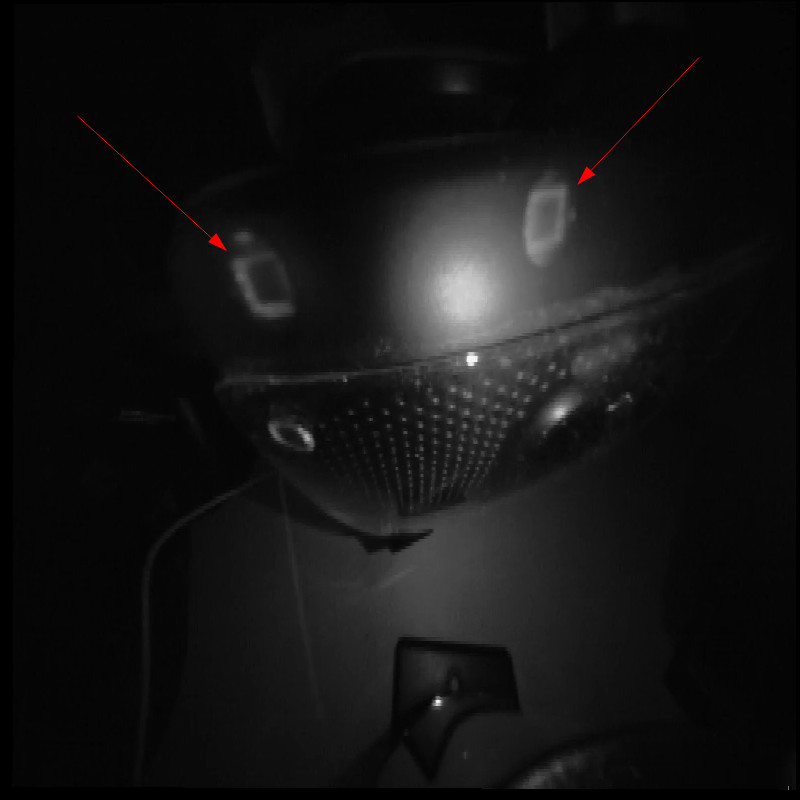I was visiting a friend over the new year and at one point we were playing around with his Leap Motion camera. I realized that the Valve Index uses infrared (IR) and should look cool in the camera.
These images and videos were made for a lark, so they’re not studio quality. They show some interesting things that I couldn’t find elsewhere. A lot of people have both a Valve Index and a Leap Motion, so I’m probably just bad at using what has become of search engines.
Index Base Station
The first thing we looked at was the IR laser from the base station. I had heard there should be a flash at a regular interval followed by a scanning laser beam, which should let the sensors on the device figure out their position in space by basically counting the time between the flash and the laser. Easier said than done, of course, but that’s the gist of it.
That’s not quite what the video shows, but that doesn’t mean it’s not what is actually happening. Instead we see lines of IR light hitting the table at more or less the same places, and no regular flash. This could simply be interaction between the laser timing and the Leap Motion frame rate, but I can’t really say what happened here.
The videos are, for no particular reason, made for cross-eye view. (The Leap Motion is actually a stereo IR camera that you can also get separately as a module from UltraLeap.)
Notice also that the front of the base station is transparent. To the naked eye the front is actually an opaque black plastic.
Index Controller

The base station is not the only thing that’s transparent in IR. The Valve Index controllers pick up the IR signals from the base station using an array of sensors. These sensors are under the plastic and the cool thing is that you can’t see the sensors at all with the naked eye, but with the Leap Motion you clearly see that the sensors are underneath transparent circles in the plastic cover.
The circles in the plastic appear to let through IR while blocking visible light. And again, by just looking at it you have no idea that this is going on. Having seen how much work is behind a regular plastic case for a product, I’m fairly certain that whoever designed this should get recognition for this achievement.
Index HMD

The head-mounted display has a cover over the front that hides a small compartment for expansions, including a USB port. This cover is transparent to the Leap Motion camera, we can just see right through it.
Since the Valve Index uses IR for tracking I would have assumed that the HMD would be designed to not reflect IR very well. But we can see that the front of the HMD acts kind of like a mirror for the Leap Motion’s IR source. I wonder why they didn’t make it matte?

Finally I wanted to show a closeup of the sensors on the HMD. The whole HMD is covered with sensors. I believe there are 32 in total. The camera doesn’t focus well as that distance so all we can see are small squares which I assume are ICs.
The whole thing is a marvellous piece of engineering.